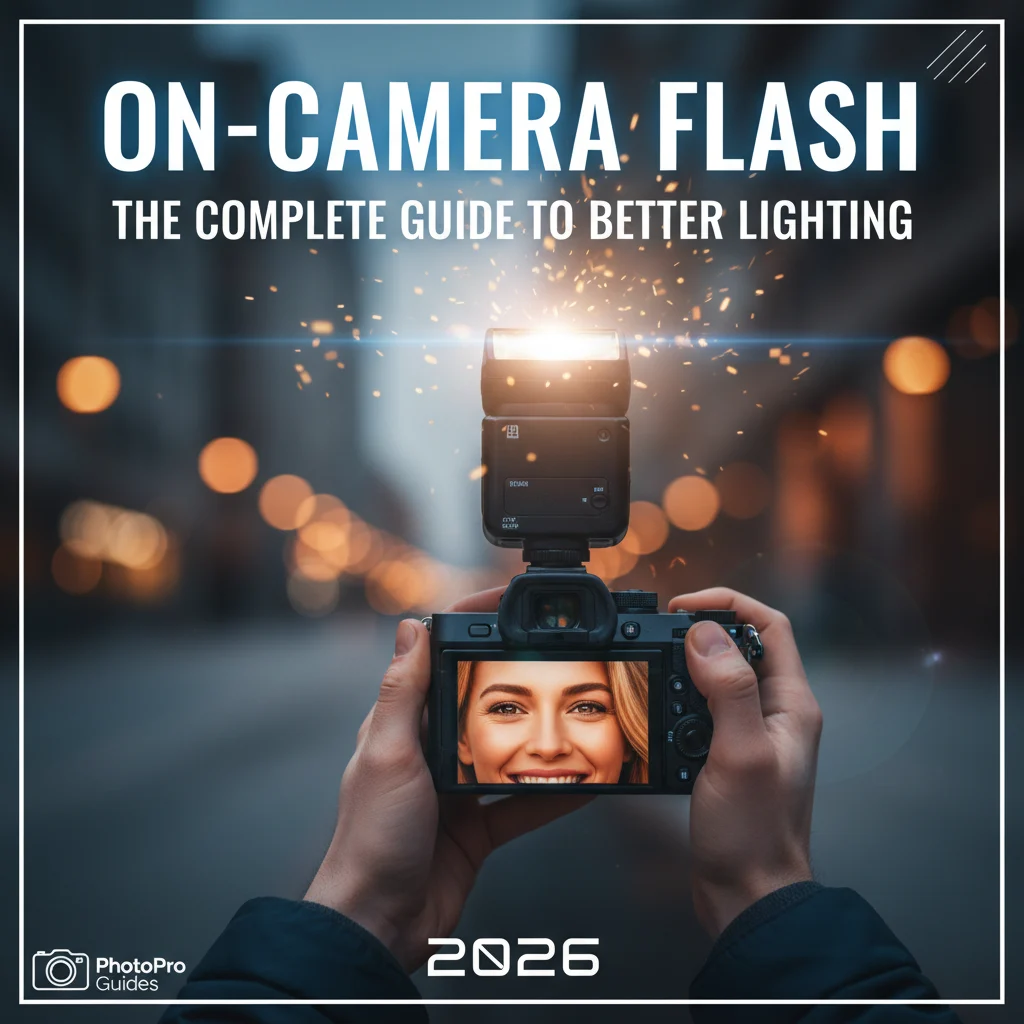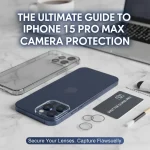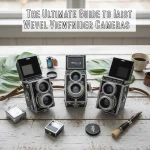[Get the best value on camera flash on Amazon today!]
# On-Camera Flash: The Complete Guide to Better Lighting in 2026
Let’s face it, relying on your camera’s pop-up flash or even natural light alone can leave your photos looking…well, less than stellar. Harsh shadows, blown-out highlights, and a generally flat appearance are common culprits. But don’t despair! In 2026, achieving professional-looking lighting is more accessible than ever, thanks to the power of on-camera flash.
This guide is your comprehensive roadmap to mastering on-camera flash photography. We’ll break down everything you need to know, from understanding the basics to mastering advanced techniques, so you can confidently capture stunning, well-lit images in any situation. Forget those amateur-looking snapshots – get ready to unlock the full potential of your camera and elevate your photography game!
[Browse top-rated on camera flash on Amazon]
## Understanding the Power of On-Camera Flash
Before we dive into the specifics, let’s quickly address why on-camera flash gets a bad rap. Often, it’s associated with that harsh, unflattering look we mentioned earlier. However, the problem isn’t the flash itself; it’s *how* it’s used. When used correctly, an on-camera flash can be a powerful tool for:
* **Adding Fill Light:** Eliminating shadows and revealing details in dimly lit environments.
* **Creating Catchlights:** Adding sparkle and life to your subject’s eyes.
* **Freezing Motion:** Capturing sharp images of moving subjects, even in low light.
* **Balancing Exposure:** Correcting backlighting situations and achieving a more balanced exposure.
The key is to move beyond direct, head-on flash and explore techniques that soften and diffuse the light for more natural and pleasing results. Let’s get started!
[Browse top-rated on camera flash on Amazon]
## Step 1: Choosing the Right On-Camera Flash
Not all on-camera flashes are created equal. While your camera’s built-in flash can be useful in a pinch, investing in a dedicated external flash unit will dramatically improve your results. Here’s what to look for:
* **Guide Number:** This indicates the flash’s power output. A higher guide number means a more powerful flash that can illuminate subjects at greater distances.
* **Tilt and Swivel Head:** Essential for bouncing the flash off walls, ceilings, or reflectors to create softer, more diffused light.
* **TTL (Through-the-Lens) Metering:** Allows the flash to automatically adjust its power output based on the camera’s meter readings, simplifying the process and ensuring accurate exposure.
* **High-Speed Sync (HSS):** Enables you to use faster shutter speeds than the flash’s sync speed, allowing you to shoot with wider apertures in bright light while still using flash.
* **Wireless Triggering:** Allows you to use the flash off-camera for even more creative lighting options (we’ll touch on this later).
**Recommended Product:** Godox V860III-C (for Canon), Godox V860III-N (for Nikon), or Godox V860III-S (for Sony). These flashes offer a great balance of power, features, and affordability, making them an excellent choice for beginners and experienced photographers alike.
* **Why We Recommend It:** The Godox V860III series offers TTL, HSS, a powerful guide number, and built-in wireless triggering, all powered by a rechargeable lithium-ion battery. This means faster recycle times and longer shooting sessions compared to flashes that use AA batteries.
[Browse top-rated on camera flash on Amazon]
## Step 2: Mastering Flash Modes and Settings
Once you have your flash, it’s time to understand the different modes and settings:
* **TTL (Through-the-Lens):** As mentioned earlier, this mode automatically adjusts the flash power for proper exposure. It’s the easiest mode to use and a great starting point.
* **Manual Mode:** Gives you complete control over the flash power. You’ll need to use a flash meter or trial and error to determine the correct settings.
* **Flash Exposure Compensation (FEC):** Allows you to fine-tune the flash power in TTL mode. Use it to brighten or darken the flash output as needed.
* **Zoom Head:** Adjusts the beam angle of the flash to match the focal length of your lens. Zooming in concentrates the light for a longer reach, while zooming out spreads the light for wider coverage.
**Pro-Tip:** Start with TTL mode and use FEC to adjust the flash power to your liking. As you gain more experience, experiment with manual mode for greater control.
[Browse top-rated on camera flash on Amazon]
## Step 3: Bouncing the Flash for Softer Light
This is where the magic happens. Instead of pointing the flash directly at your subject, bounce it off a nearby surface, such as a ceiling or wall. This diffuses the light, creating a softer, more natural look with fewer harsh shadows.
* **Aim for White or Neutral Surfaces:** Colored surfaces will tint the light, affecting the colors in your photo.
* **Consider the Distance:** The farther the surface, the more the light will spread.
* **Use a Bounce Card:** If there’s no suitable surface to bounce off, attach a bounce card to your flash head to redirect some of the light forward.
**Recommended Product:** MagMod MagBounce. This is a popular and effective flash modifier that easily attaches to your flash and provides a large, soft light source.
* **Why We Recommend It:** The MagMod system is incredibly versatile and easy to use. The MagBounce creates beautiful, soft light that’s perfect for portraits and other subjects.
[Browse top-rated on camera flash on Amazon]
## Step 4: Diffusing the Flash for Even Softer Light
Even when bouncing the flash, you can further soften the light by using a diffuser. A diffuser spreads the light over a wider area, reducing harshness and creating more gradual transitions between light and shadow.
* **Use a Softbox:** A mini softbox that attaches to your flash head is a great option for creating soft, flattering light.
* **Try a Dome Diffuser:** These diffusers spread the light in all directions, creating a more ambient look.
* **DIY Diffusers:** You can even create your own diffuser using materials like tracing paper or a white plastic bag.
**Recommended Product:** Gary Fong Lightsphere Collapsible Speed Mount. This diffuser is designed to create a soft, even light that wraps around your subject.
* **Why We Recommend It:** The Gary Fong Lightsphere is a well-regarded diffuser that provides excellent results and is relatively easy to use.
[Browse top-rated on camera flash on Amazon]
## Step 5: Mastering Off-Camera Flash Techniques
Once you’re comfortable with on-camera flash, you can take your lighting skills to the next level by using your flash off-camera. This gives you greater control over the direction and quality of light.
* **Use Wireless Triggers:** These devices allow you to remotely trigger your flash.
* **Experiment with Different Positions:** Place the flash to the side, behind, or above your subject to create different lighting effects.
* **Use Light Stands and Modifiers:** Use light stands to position your flash and modifiers like softboxes or umbrellas to shape and control the light.
**Recommended Product:** Godox XPro TTL Wireless Flash Trigger. This trigger is compatible with Godox flashes and allows you to control your flash settings remotely.
* **Why We Recommend It:** The Godox XPro is a reliable and feature-rich wireless trigger that’s easy to use and offers excellent value for money.
[Browse top-rated on camera flash on Amazon]
## Tools for the Job:
The right equipment can make all the difference in your on-camera flash photography. Here are a couple of essential tools to consider:
* **Godox V860III Series Flash:** As mentioned before, this flash offers a great balance of power, features, and affordability. Its TTL capabilities make it easy to use, while its manual mode provides more control for experienced photographers. The built-in wireless triggering is a huge plus.
* **MagMod MagBounce:** This modifier is a game-changer for softening the light from your flash. It’s easy to attach and provides a beautiful, natural look.
[Browse top-rated on camera flash on Amazon]
## Pro-Tips / FAQ Section:
* **My flash photos are always overexposed! What am I doing wrong?**
* Make sure your flash is in TTL mode and that you’re using Flash Exposure Compensation (FEC) to dial down the flash power if needed. Also, try bouncing or diffusing the flash to soften the light.
* **How do I avoid red-eye in my flash photos?**
* Red-eye occurs when the flash reflects off the subject’s retina. To minimize red-eye, try bouncing the flash, using a diffuser, or moving the flash farther away from the lens.
* **What’s the best way to photograph groups with flash?**
* When photographing groups, make sure everyone is evenly lit. Use a wider flash angle (zoom out the flash head) and consider using a more powerful flash to ensure adequate coverage. Bouncing the flash off a ceiling or wall can also help to distribute the light more evenly.
* **Can I use on-camera flash outdoors?**
* Absolutely! On-camera flash can be a lifesaver outdoors, especially in backlighting situations. Use it to fill in shadows and balance the exposure.
[Browse top-rated on camera flash on Amazon]
## Encouraging Conclusion:
Mastering on-camera flash may seem daunting at first, but with a little practice and the right equipment, you can dramatically improve the quality of your photos. Don’t be afraid to experiment with different techniques and settings until you find what works best for you
[Check the latest prices and deals for on camera flash on Amazon today!]











